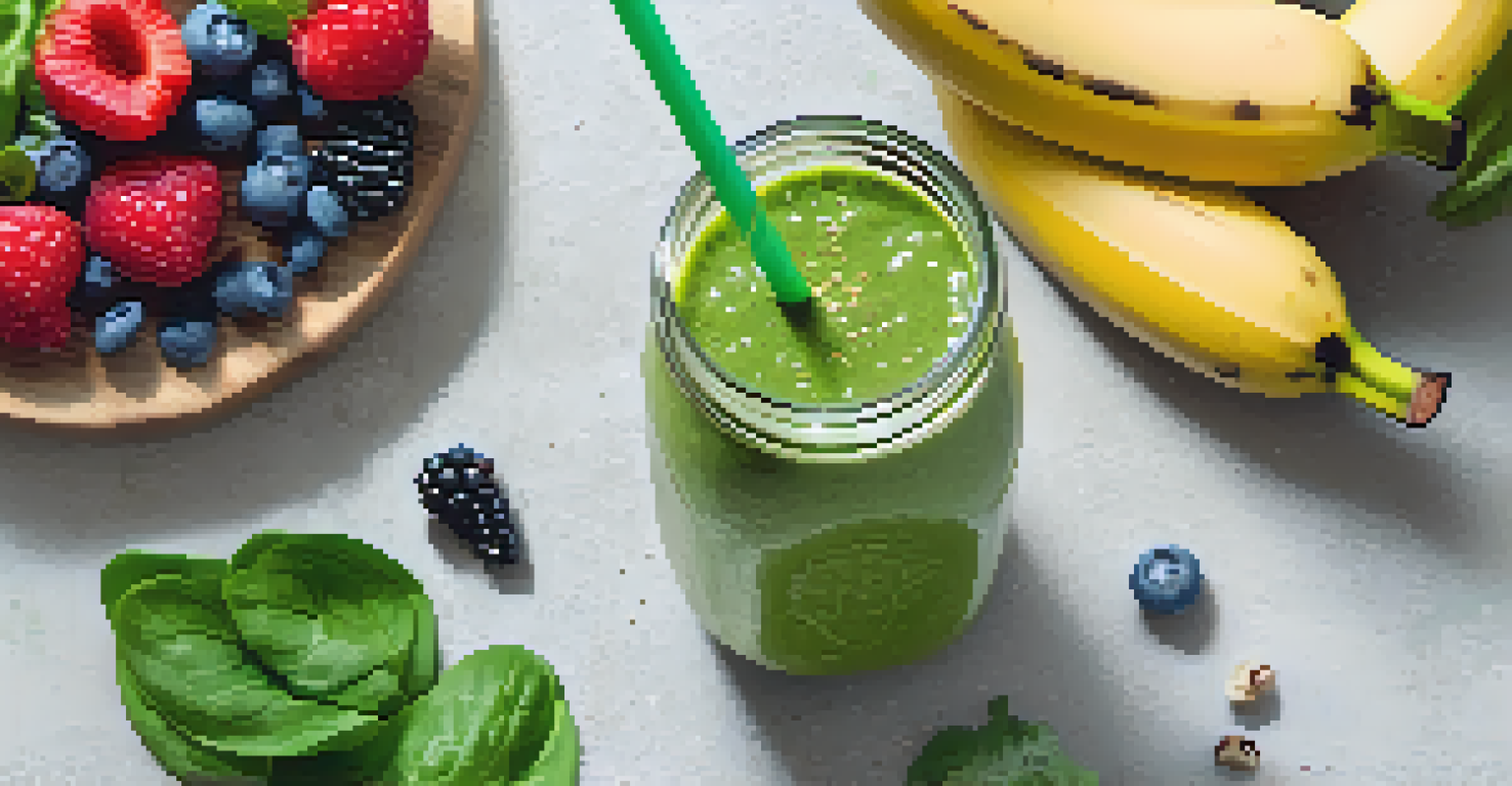Examining Fiber Intake in Raw Food Diets and Gut Health

Understanding Raw Food Diets and Their Components
Raw food diets primarily consist of uncooked, unprocessed plant-based foods. These diets typically include fruits, vegetables, nuts, seeds, and sprouted grains. The idea is that cooking can destroy vital nutrients and enzymes, making raw foods a healthier choice.
Let food be thy medicine and medicine be thy food.
By focusing on whole, unprocessed foods, raw food diets are rich in vitamins, minerals, and antioxidants. However, one critical component often discussed in these diets is fiber, which plays a key role in digestive health. It's essential to understand how this fiber contributes to overall gut wellness.
While many people may think of fiber as a single entity, it actually comes in two forms: soluble and insoluble. Both types are crucial for a balanced diet, especially in a raw food regimen, as they help maintain a healthy digestive system.
The Role of Fiber in Digestive Health
Fiber is known for its many health benefits, particularly when it comes to digestion. It adds bulk to the stool, which helps food move more smoothly through the digestive tract. This can prevent issues like constipation, a common concern for those who may not consume enough fiber.

Moreover, fiber feeds the beneficial bacteria in our gut, promoting a healthy microbiome. A diverse microbiome is essential for various bodily functions, including nutrient absorption and immune response. When we consume fiber-rich foods, we're essentially nurturing these good bacteria.
Raw Foods Are Nutrient-Rich
Raw food diets are abundant in vitamins, minerals, and fiber, promoting overall health and digestive wellness.
In raw food diets, the high fiber content can lead to improved gut health and overall well-being. However, it's crucial to ensure that the fiber intake is balanced and varied to reap the maximum benefits and avoid any digestive discomfort.
Types of Fiber Found in Raw Foods
Raw foods are packed with both soluble and insoluble fibers, each serving unique functions. Soluble fiber, found in foods like fruits and oats, dissolves in water and can help lower cholesterol levels. On the other hand, insoluble fiber, abundant in vegetables and whole grains, adds bulk to the stool and aids in regularity.
You are what you eat, so don’t be fast, cheap, easy, or fake.
For example, fruits like apples and pears are excellent sources of soluble fiber, while leafy greens and carrots provide significant amounts of insoluble fiber. Including a variety of raw foods in your diet can help ensure adequate intake of both types of fiber.
This variety not only keeps meals interesting but also supports different aspects of gut health, making it essential for those following a raw food diet to mix and match their food choices.
Benefits of Higher Fiber Intake on Gut Health
Increased fiber intake is often linked to a host of digestive benefits. For example, it can help regulate bowel movements, reducing the likelihood of constipation or diarrhea. This consistency in bowel health is vital for overall gut function.
Furthermore, a fiber-rich diet can help with weight management by promoting feelings of fullness. When eating raw foods, the high fiber content can lead to less snacking and reduced calorie intake, making it easier to maintain a healthy weight.
Fiber Supports Gut Health
Both soluble and insoluble fiber from raw foods play essential roles in digestive health, preventing issues like constipation.
Additionally, fiber may play a role in preventing gastrointestinal diseases. Studies have suggested that diets high in fiber can lower the risk of conditions like diverticulitis and colorectal cancer, highlighting the importance of fiber in a raw food diet.
Potential Challenges of Raw Food Fiber Intake
While fiber is an essential part of a raw food diet, excessive intake can lead to digestive discomfort, such as bloating or gas. This is particularly true for those who may not be used to high-fiber diets. Gradually increasing fiber intake can help mitigate these issues.
Moreover, some individuals may find it challenging to reach their daily fiber goals solely through raw foods. This can be due to personal preferences, seasonal availability of fresh produce, or simply the difficulty in consuming enough volume of raw foods.
To overcome these challenges, it's important to plan meals carefully and incorporate a variety of fiber-rich raw foods. This approach not only supports gut health but also ensures a balanced intake of nutrients.
Tips for Increasing Fiber in Raw Food Diets
One effective way to boost fiber intake in a raw food diet is to incorporate more fruits and vegetables into your meals. Smoothies, salads, and raw snacks can be excellent ways to include a variety of fiber-rich options. Think of blending spinach with bananas for a deliciously fiber-packed smoothie.
Another tip is to add nuts and seeds to your meals. These not only provide healthy fats but also contribute a considerable amount of fiber. For example, sprinkling chia seeds or hemp seeds over salads can enhance both nutrition and texture.
Balance Is Key for Fiber Intake
While fiber is crucial for gut health, achieving the right balance in intake is important to prevent digestive discomfort.
Lastly, consider experimenting with sprouted grains. They are often easier to digest than their whole counterparts and can be a fantastic source of fiber. Incorporating these tips can make a significant difference in achieving optimal fiber intake for improved gut health.
Conclusion: Balancing Fiber Intake for Optimal Gut Health
In conclusion, fiber plays a pivotal role in supporting gut health, especially within the framework of a raw food diet. By understanding the different types of fiber and their benefits, individuals can make informed choices to enhance their digestive wellness. It's clear that a balanced approach to fiber intake is crucial.
However, it's equally important to listen to your body. Gradually incorporating a variety of raw foods rich in fiber can help prevent digestive discomfort while reaping the benefits of a healthy gut. Remember, moderation and variety are key.

Ultimately, a raw food diet can be a deliciously nutritious way to support gut health, provided that fiber intake is thoughtfully managed. Embracing this balance can lead to a happier, healthier digestive system.